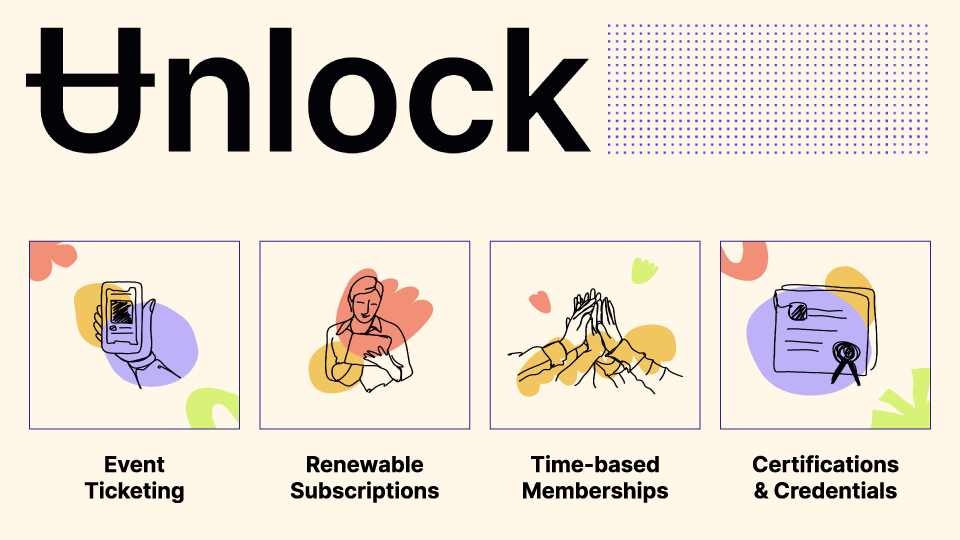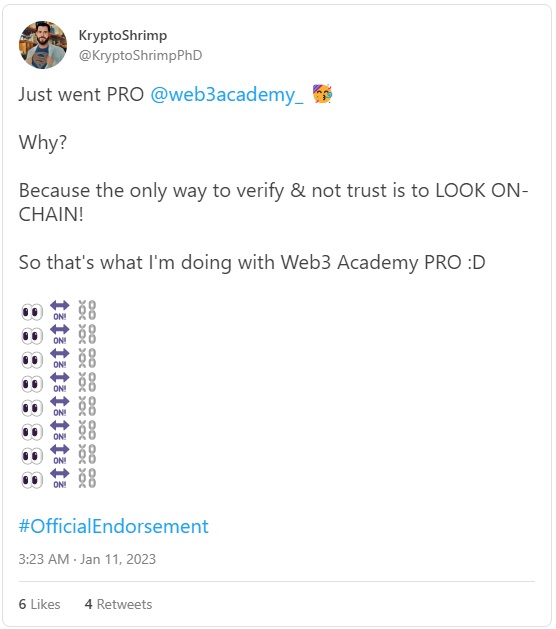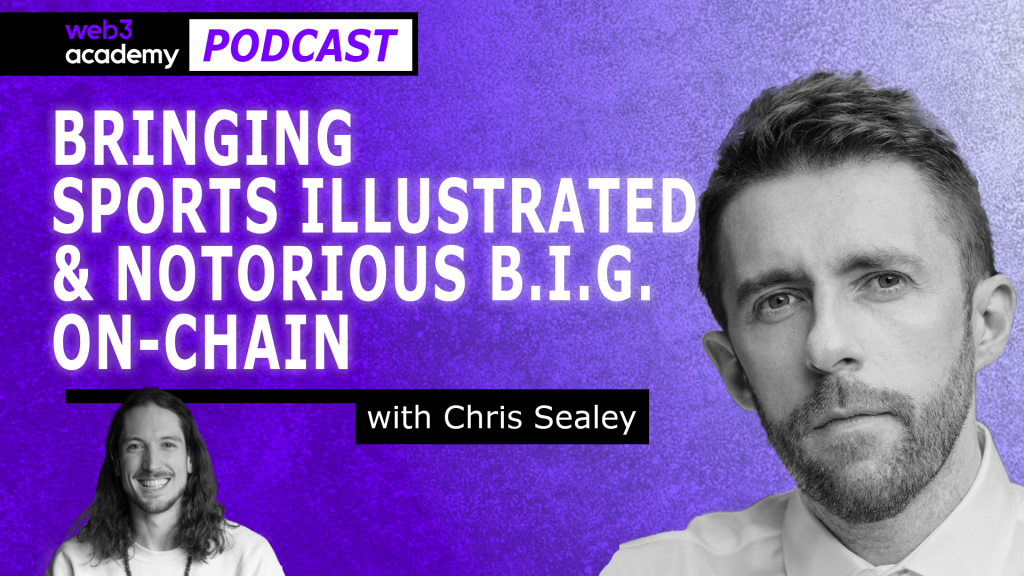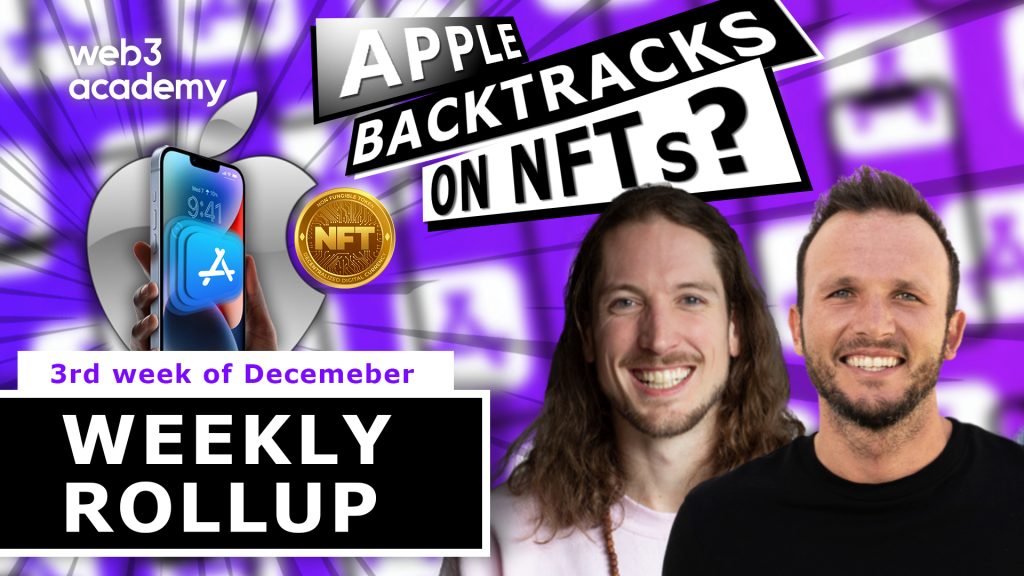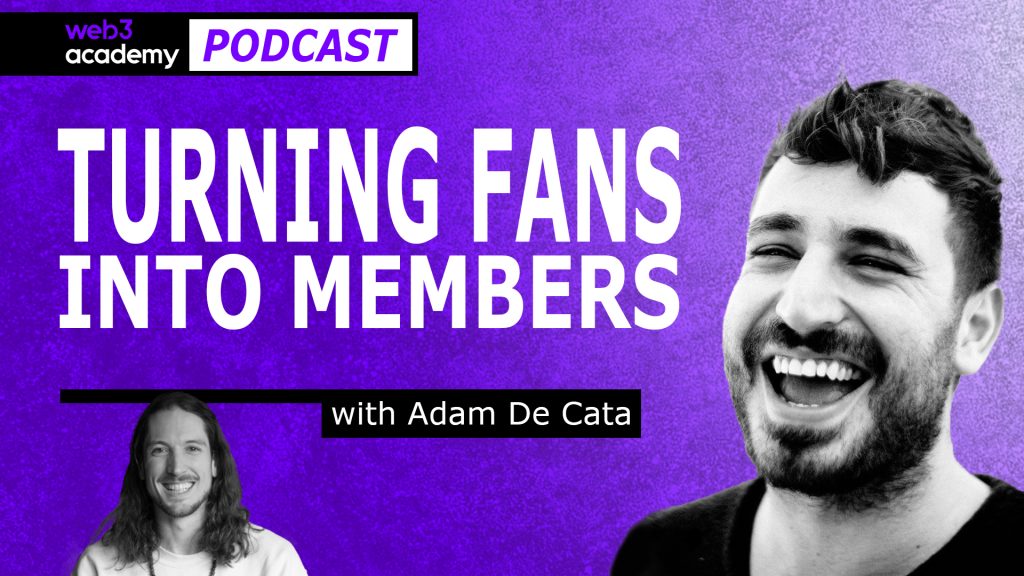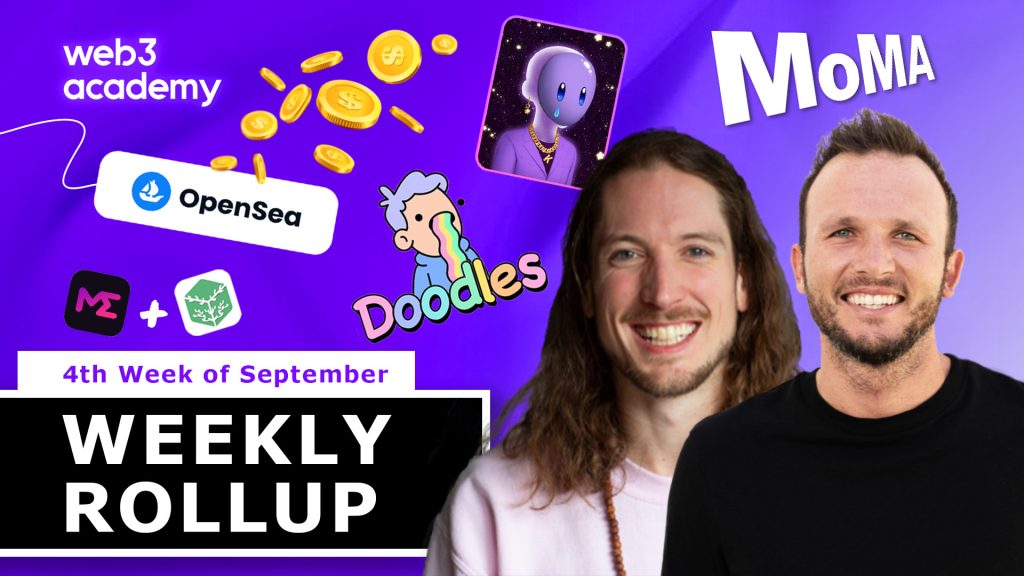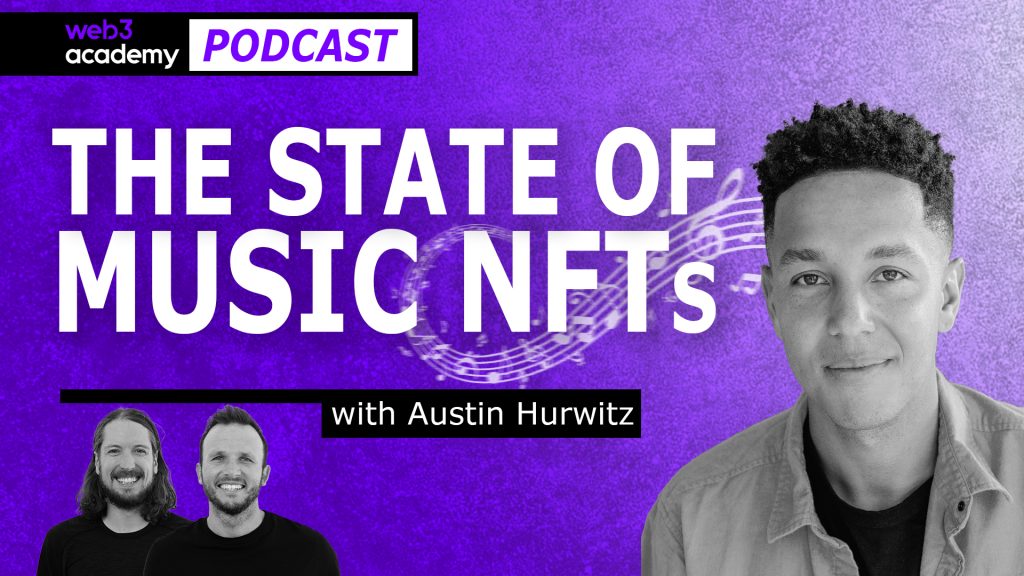
The State of Music and How NFTs Are Making the Industry Fairer | Austin Hurwitz from One Big Idea
Musicians sure do have it hard out here
Prefer listening? Learn all about the music industry on your favorite platform 👇
GM DOers!
Music is one of the most enjoyed art forms in the world today.
And thanks to platforms, like Spotify which has 456 million monthly active listeners alone, consumers have never had the level of music access we have now. 🤯
But in its current state, the music industry is a seriously unfair playing field for one of its most important participants—artists themselves.
To pull back the curtain on what’s happening in the space, we invited Austin Hurwitz from One Big Idea.
In this episode, he shares his views on the industry after having worked in Amazon’s music division, at Venice Music, and now as a web3 consultant.
We discuss:
- What it’s like to be a musician in 2023 (and everything that’s wrong with the industry) 😲
- How web3 and NFTs can give power back to artists instead of big corporations 💪
- What the future of the music industry could look like 🔮
Before we dive in, though, we just wanted to give a huge shout-out to the community and share our gratitude for all the DOers who went PRO in the last week. 🙏
The response has been incredible with over 100 DOers scoring themselves a 50% lifetime discount on the #1 resource for understanding which business models and technologies are winning in web3.
But we’ve heard that some of you missed a spot to claim the discount, so…
To show our appreciation for your support, we’re extending the 50% lifetime discount until Saturday!
That means you can get Web3 Academy PRO for as little as $7.50 per month (I can tell you right now that Kyle and the PRO team are bringing waaaay more value than that). But Kyle himself asked us to open the discount back up for a very simple reason—we want you to win! 🥇
Because without our community where would we be?
So if you haven’t gone PRO already, now’s your final chance to take advantage of this crazy 50% lifetime discount because you won’t see floor prices like this anytime soon—if ever.
P.S. Substack may need your email before you can sign up!
Now, let’s dive into the music industry.
What It’s Like to Be a Musician in 2023
In the past, musicians would have to deal solely with large record labels because this was the only way to publish their music.
But the biggest problem was (and still is) that these labels have control over every aspect of an artist’s music once they sign the dotted line. This happens because labels typically own a musician’s “master recordings”, meaning the label can decide when (or if) they’ll publish the music.
Now, even if a label does decide to publish an artist, the artist often gets just 20% of the profits—and that’s after recoupment which ensures that labels get paid first. 🤧
For example, if a label spends $200k on a release, the artist will only see their first dollar after the release generates more than the recoupment number. So in reality, some artists may never even turn a profit at all!
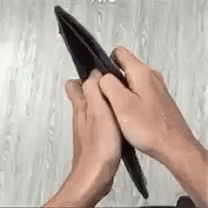
Austin shared that some artists can even get “stuck” with a record label.
For example, an artist could sign a multi-album deal, but if a label doesn’t like what they’re creating, they can flat-out refuse to publish it.
That puts artists in a position where they’re not earning money (some may even still need to pay recoupment!) and they’re stuck with a label that doesn’t want to support their career.
While the industry has changed significantly since the advent of streaming platforms, artists are still the ones getting the short end of the stick. 🌿
Yes, platforms like Spotify increase access to distribution, but it also means that artists deal with tons more competition. When Austin worked at Amazon, they had around 40 million songs on the streaming service, but fast forward to today and we’re seeing platforms with over 100 million.
Streaming platforms also cap the value of an artist’s music. While the number of songs on these services can grow exponentially (as we’ve seen), they can’t keep increasing their monthly fees to compensate artists.
That’s why we’re seeing royalties sit between a tiny $0.003 – $0.005 per play—and that whole number doesn’t go to artists unless they’re completely independent!
That means the key revenue driver for musicians isn’t from the music itself, it’s actually from merchandise, touring, brand partnerships, etc. So we can think of the streaming landscape as the “top of funnel” for artists where the goal is to get as many eyes on themselves as possible before converting them to other offers.
This is also true for popular rock bands like The Rolling Stones. The band earned a total income of $50.8 million in 2021 with a staggering 87% of their income ($44.5 million) coming from touring. 😲
But going on tour isn’t feasible for every artist (especially up-and-comers) due to the sheer cost of equipment, staff, travel, and other factors.
The good news is that web3 can help musicians overcome these struggles.
🤝 Together with Unlock Protocol: NFT Ticketing is the Future. Learn How to Easily Create and Sell NFT Tickets for Your Next Event!⚡
Why Web3 Gives Power Back to Artists
I’ll preface this by saying that web3 isn’t a silver bullet to all artists’ problems, but its technologies can provide them with more independence and control.
Austin believes that the key benefit for artists is that web3 uncaps the value of their music. For example, when vinyl and CDs were popular, artists were capped by the market price of other products. 📉
And the same is true with streaming which is around $9.99 per month. Artists can’t force Spotify to charge more, so the pie keeps getting smaller as more music becomes available on the platform.
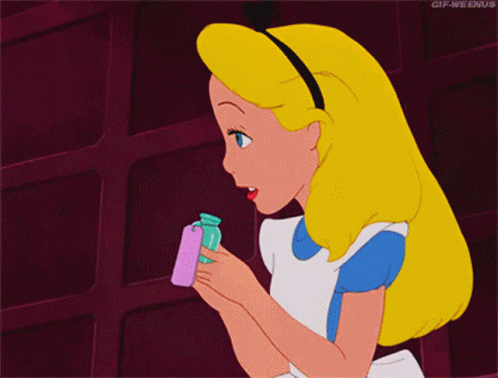
In contrast, other artists, such as painters, have never had a similar cap to their work because the value of their creations has never been tied to their distribution method.
Web3 is what unlocks this capability for musicians. It allows them to freely set the mint price of their NFTs (or other tokens) because they provide real ownership to holders while also persisting for as long as the underlying blockchain it’s stored on.
But why would anyone pay $100, $50, or even just $10 for a song or album when they can likely listen to it elsewhere for a fraction of the price? 💭
Another prominent music NFT investor, Cooper Turley, believes that these tokens could be seen as collectors’ items, such as sports trading cards, where cards showing popular athletes can fetch large sums of money.
So when you look at music NFTs in this light, you can easily understand why someone may pay a higher multiple to own an item from an artist that’s popular (or has the potential to become popular).
But music NFTs aren’t just good for musicians, they’re good for fans as well. ✅
Why Music NFTs are Seeing Exponential Growth
Austin believes that the real key to music NFTs’ budding success comes down to three factors:
- Community
- Context
- And clout
Let’s break them down.
Community
Now, community has become a buzzword in web3, and for good reason. Many people think that simply launching an NFT collection and having a Discord full of speculators is all it takes to build community.
It’s not. ❌
Communities are built through regular engagement and conversations with a project’s audience. In the case of music NFTs, this could mean dropping releases on a regular cadence and asking for feedback so that you’re truly building with your community.
Or it could be discussing the latest trends in the industry or a new direction you want to take with your music. 🤷♀️
For music fans, this is a much more intimate experience compared to traditional music fan clubs where the artist themselves isn’t even involved in the conversation!
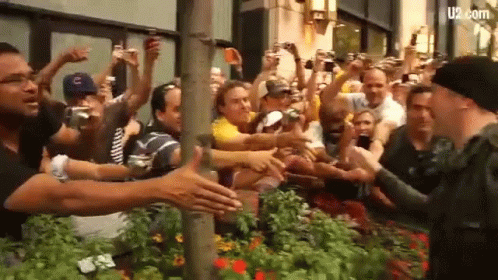
While engagement is your bread and butter, it’s also important to reward your existing community for their continued support. This could look like early or discounted pre-sale access, or even a Discord channel for your die-hard supporters.
Context
Context is all about your community understanding your story—for example, why you became a musician or what your inspiration was for a particular song.
Austin shared that he was always pumped to read stories about his favorite artists as it gave him a greater understanding and connection to the songs he listened to. It gave meaning.
This connection is something we’ve completely lost since streaming became popular—a key reason why most people cringe at the thought of spending $50 on an NFT versus streaming a track on Spotify. 🤷
So how can you build context?
Daniel Allen, a popular web3 musician, built context by hosting Twitter Spaces and sharing what his upcoming album meant to him. He also shares notes about the different songs on his albums.
However, one of Austin’s most profound web3 experiences (and something he will always cherish) was attending Daniel’s listening party for his EP where everyone had to listen together before they could mint the release.
It’s all about creating that experience for your community!
Clout
It’s no secret that humans love to flex. Just look at the JPEG PFPs on Crypto Twitter or your favorite influencer plastering your feed with Lambos or sexy selfies and you’ll know what we’re talking about.
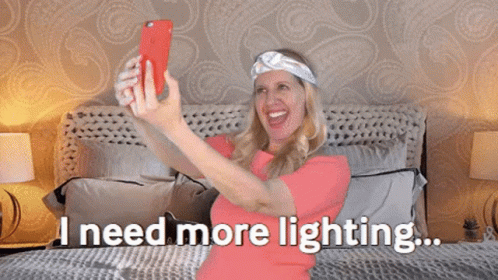
People also love to flex when it comes to music as you would have seen at the end of 2022 with Spotify Wrapped.
However, music NFTs take this to the next level by giving people true ownership of the songs they listen to. And instead of just flexing their PFPs, collectors are free to flex their album art and the accompanying media whenever they like.
But one of the biggest flexes when it comes to music is proving that you discovered an artist before they hit it big—and thanks to blockchains and NFTs, we can do just that. ✅
On top of this, NFTs allow us to share in the success of the artists who hit it big since the token will likely grow in value.

SOCIALS
Tweet of the Week
What the Music Industry’s Future Could Look Like
The music industry is ripe for disruption and web3 has real potential to change the power dynamics between artists and record labels.
While we don’t think music NFTs will replace record labels or streaming platforms, it’s likely they’ll become a new vertical for artists that complements their web2 marketing strategies.
Austin believes that the best approach for artists that want to leverage web3 is to keep it simple. You don’t have to worry about giving your community tons of additional utility beyond your music, album art, and a Discord server or Telegram group because these are the factors that facilitate community, context, and clout.
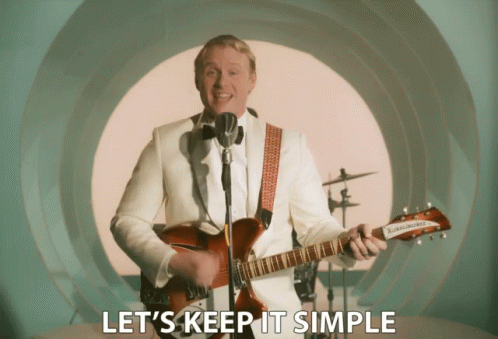
You could even start by simply selling concert tickets as NFTs which gives your community a collectible item while allowing you to token gate a Discord server and learn more about your holders. 🎫
Music NFTs could also become the way that artists raise funds for producing music, touring, or creating merchandise in the beginning—a much better option than signing the typical predatory record label contracts that up-and-coming artists usually receive.
Austin is also excited about the potential for augmented experiences (aka mixed reality) in the music industry. For example, artists could create augmented spaces at their events where attendees can RSVP to after-parties or even mint limited collectibles or proof-of-attendance pictures which can be used to reward supporters later on.
Now, for those musicians who are currently in web3 (or want to get involved), Austin shared some helpful tips on the podcast:
- Participate before you release: The first thing you should do before releasing your own music NFTs is to support other artists whether that’s minting their music or providing feedback in their communities. Not only will you build a network for your own release, but you’ll understand the ecosystem better.
- Be modest in your estimates: To build a healthy collector ecosystem, Austin believes you should always sell fewer NFTs than you think you can for less than you think they’re worth. That way you’re not oversaturating or over-extracting your community. For example, if you think you can sell 50 tokens, sell 20. If you think that they’re worth 0.1, sell them for 0.05.
- Get to know collectors: These people are the top buyers and supporters in the community. They’re on top of the latest trends and innovations in the space so browse their collections on Sound.xyz, follow them on Twitter, and understand the type of music they’re looking for.
- Focus on your true fans: Austin believes that success in web3 is more about building personal relationships than trying to appeal to the masses. It’s about finding your true supporters that appreciate your creativity rather than putting out generic hits that people forget after a month.
Looking at the big picture, though, music NFTs are an incredible tool that musicians can use to build thriving communities and wrestle power back from incumbent record labels. 💪
They’re also an excellent way for fans to build relationships with and support their favorite artists—and that’s why music NFTs are experiencing a bull market right now!

While diving into on-chain data and sharing the cold, hard facts on music NFTs is out of the scope of this DOer Spotlight, Kyle has a Web3 Academy PRO report coming out on this topic very soon.
So if you’re a musician, collector, investor, or builder and want to stay at the forefront of music industry innovation, don’t miss your chance to go PRO with a 50% lifetime discount. 🤯
Remember, you have until Saturday to secure your discounted spot, and as much as we want to give our community the best deal possible, prices will go up this time (Kyle needs to eat!). 🍕
P.S. Substack may need your email before you can sign up!
Until next time, frens. ✌️

FOR THE DOERS
Take Action & Level Up
JOIN
Don’t miss out on scoring yourself a 50% lifetime discount on PRO ,the #1 resource for investors, builders, and creators in web3 (until Saturday only)!
VERIFY
Dive into Lens Protocol’s Activity & Growth in Kyle’s first PRO report.




